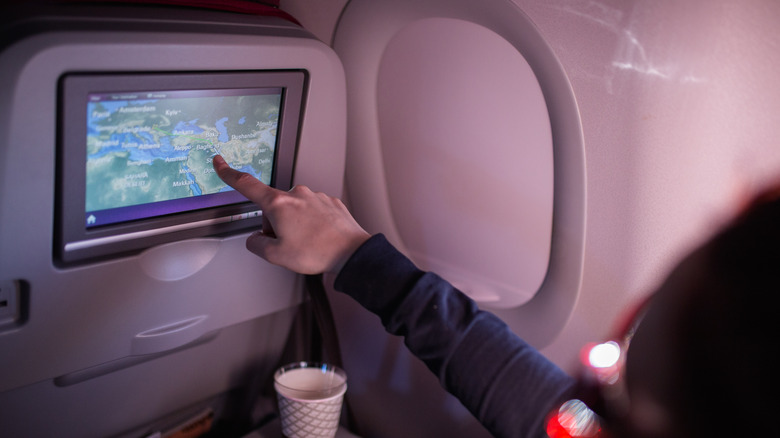The Unexpected Reason A Flight Heading East Is Faster Than A Flight Heading West
If you've checked the flight times on a round-trip reservation, you may have noticed that flights heading east tend to be shorter than those heading west. Depending on your route, you might save an hour or more on your eastward journey, which can make surviving a long-haul flight a tad easier. It's easy to attribute this difference to the Earth's rotation, but that's not the real reason behind the phenomenon.
Instead, jet streams in the Earth's atmosphere explain why flights heading east tend to be faster than those going in the opposite direction. Around the globe, you'll find powerful streams of wind, particularly at high altitudes. Thanks to what's known as the Coriolis Effect, these jet streams swirl in a circle and, depending on their location above the Earth, typically in a predictable direction. In the Northern Hemisphere, these air masses move west to east in narrow channels.
If a plane flies in a fast-moving jet stream, it'll generally pick up speed, resulting in shorter flight times. This can work to pilots' advantage when they're delayed or traveling with limited fuel. In some cases, a flight might even land way earlier than it should've, thanks to the jet stream's force.
How the Coriolis Effect might impact your trip
Spending less time in the air isn't the only way jet streams can impact your flight. The route your plane will take to reach its destination may also be altered due to these strong winds. Pay attention to the flight tracker on your seatback screen and you may notice that the plane isn't moving in a straight line. This could be because the nearest jet stream is off course, located near the North Pole or south near the equator, for example. Even if it looks like you're getting further from your destination, the jet stream will still often help you arrive in less time.
Unfortunately, eastward jet streams aren't always a good thing. For one, flying within jet stream masses can expose planes to clear air turbulence, a type of unexpected turbulence that occurs when slow jet streams and fast jet streams collide. This phenomenon can cause planes to shake violently, putting passengers at risk. It's also worth noting that jet lag tends to be worse when traveling east, and the shorter flight times mean you have even less chance to prepare for changing time zones.
With that said, you may not notice these effects at all, depending on where your flight takes place. Though jet streams typically blow to the east, the opposite is true of streams in the Southern Hemisphere. If you happen to be on a flight between two cities in the south, you may find that your flight going west is shorter than your journey east.

